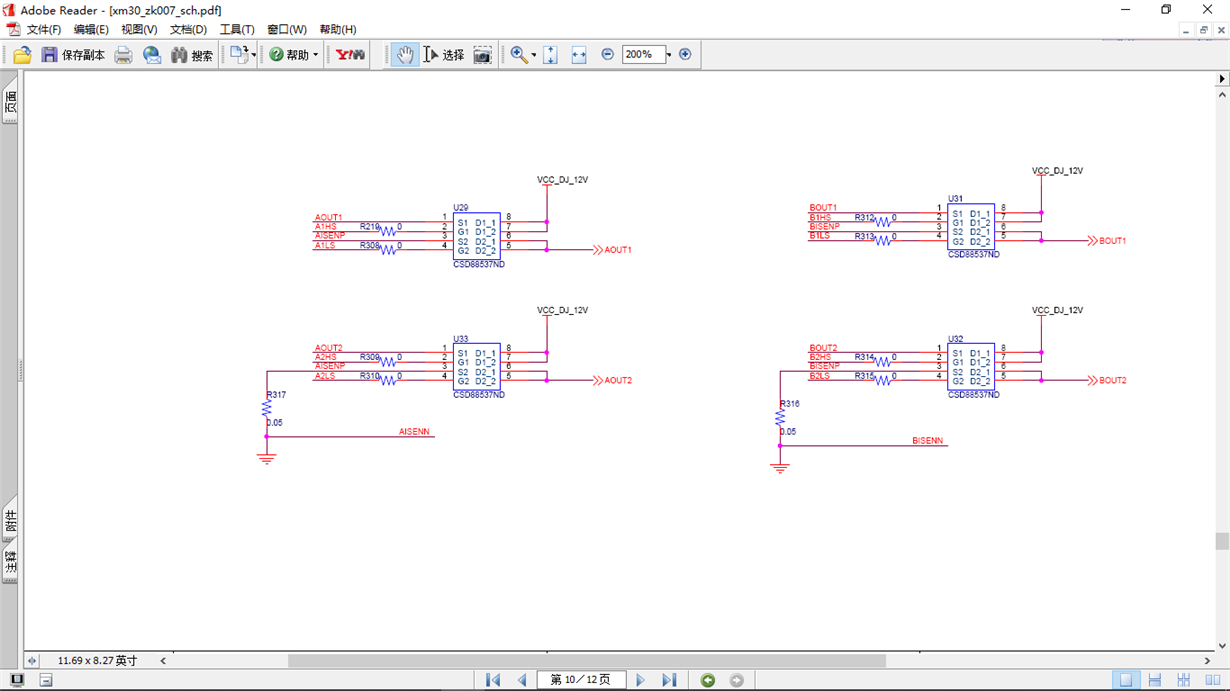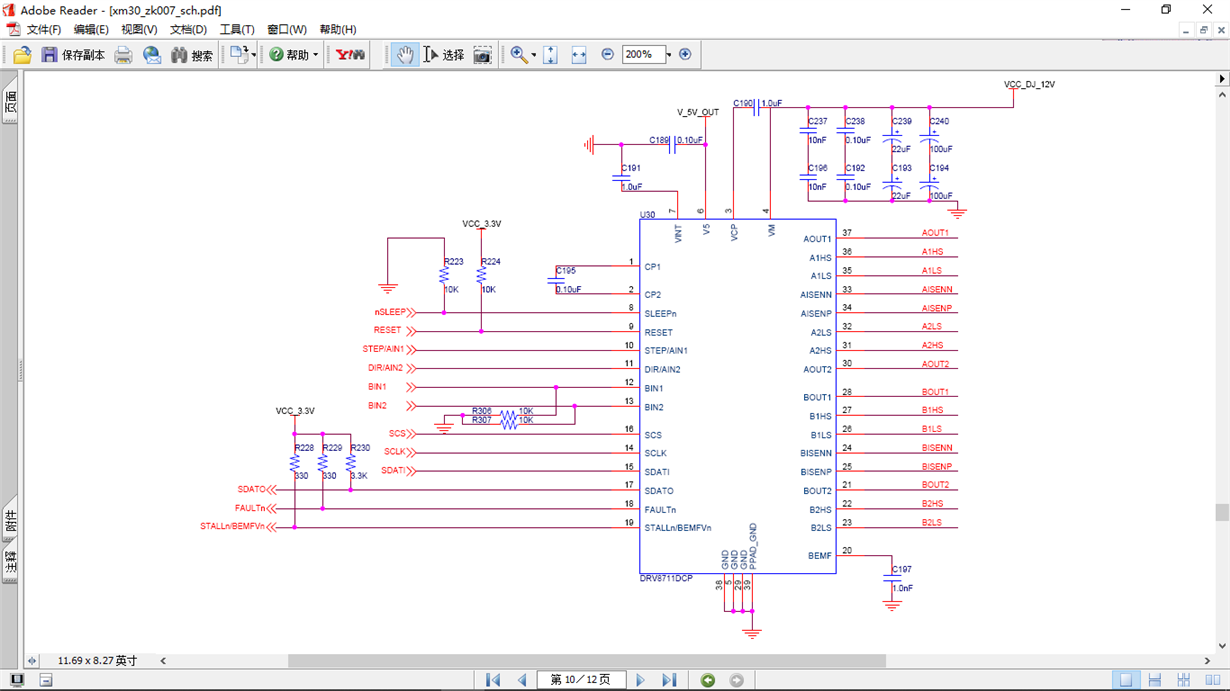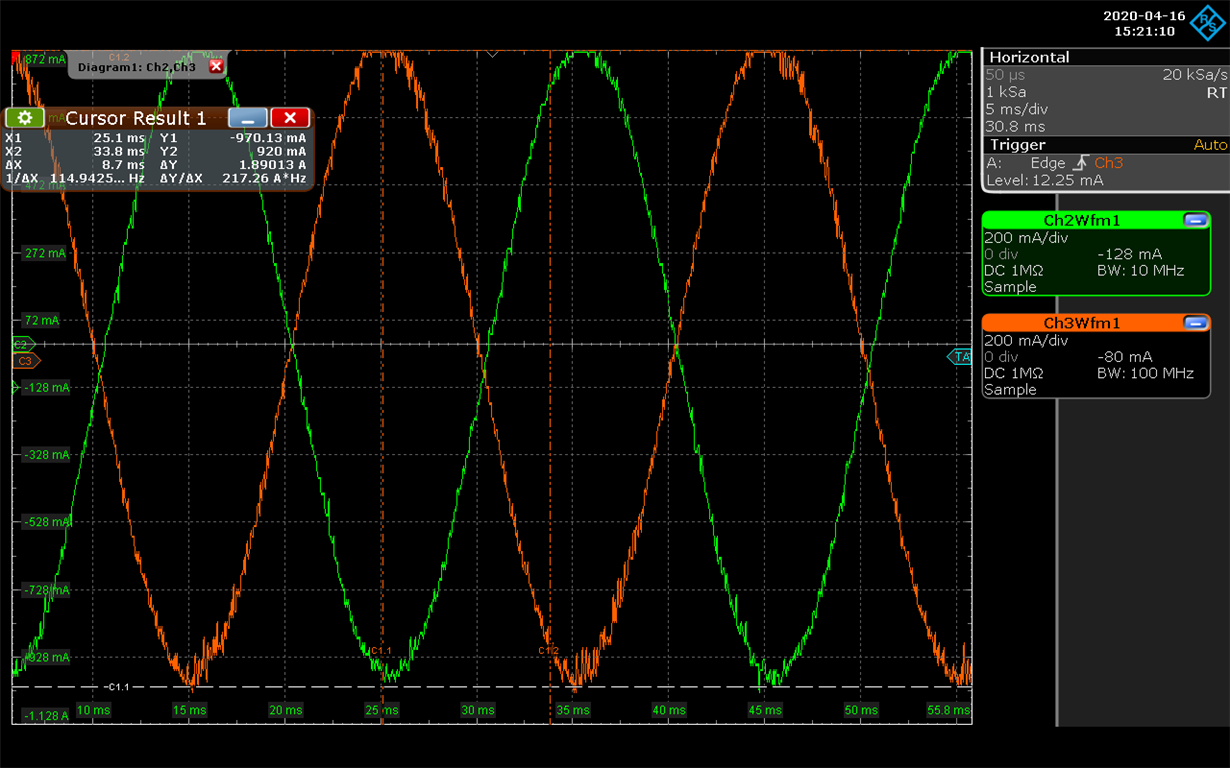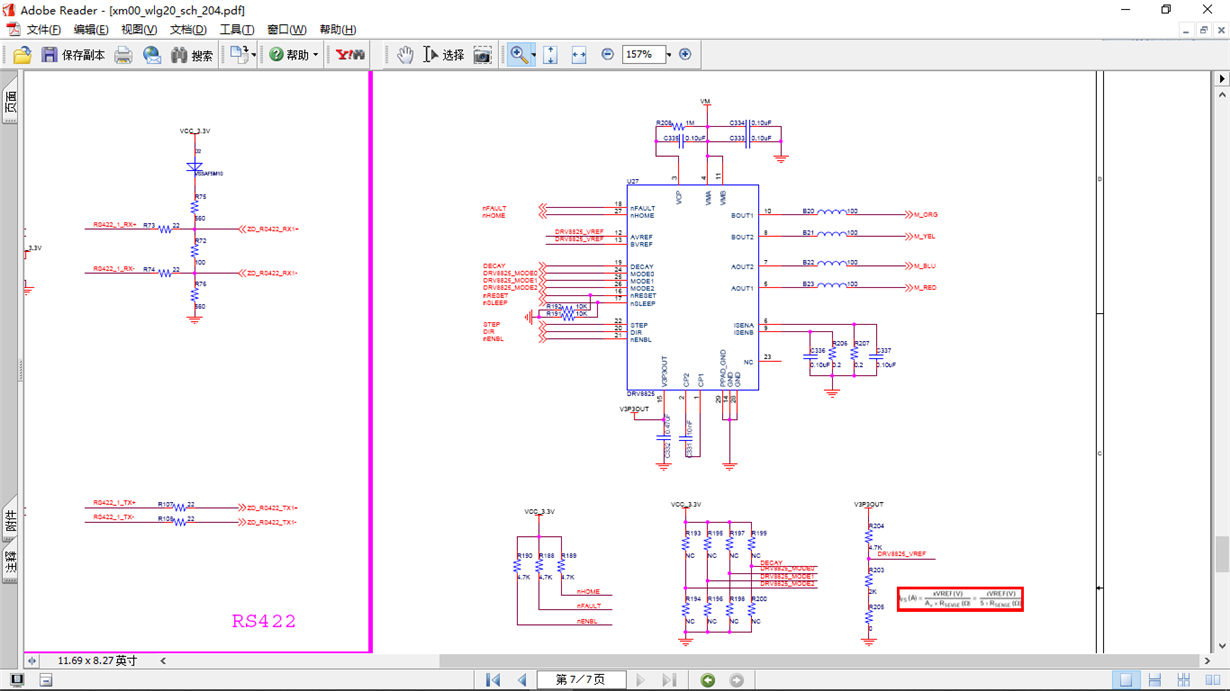Other Parts Discussed in Thread: DRV8711
Hi Team,
The customer is experiencing below issue and needs your help.
DRV8825 motor driver chip has noise problems when the motor runs under load. This does not happen when the customer changes other chips. He used two current probes to look at the two phase current waveforms respectively, suspecting that the phase current glitches are large. Customer would like to know why this happens?
The yellow one is the current of one phase of drv8825, and the schematic diagram






